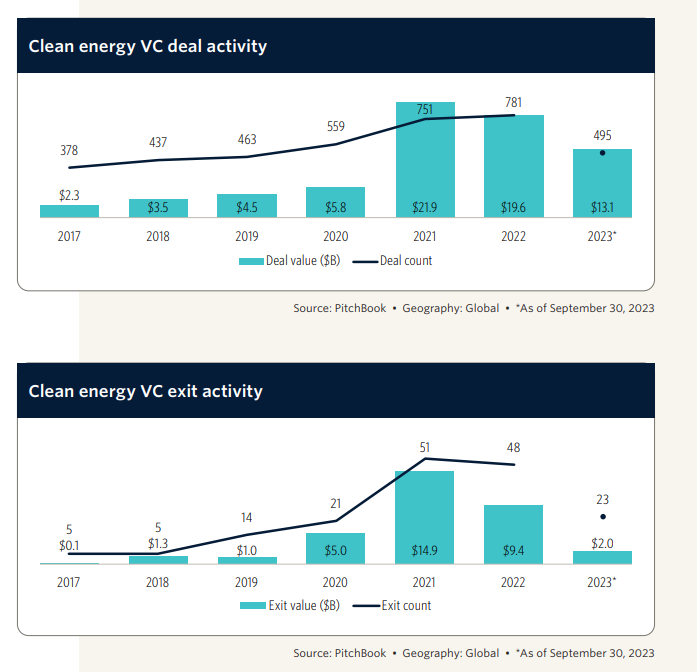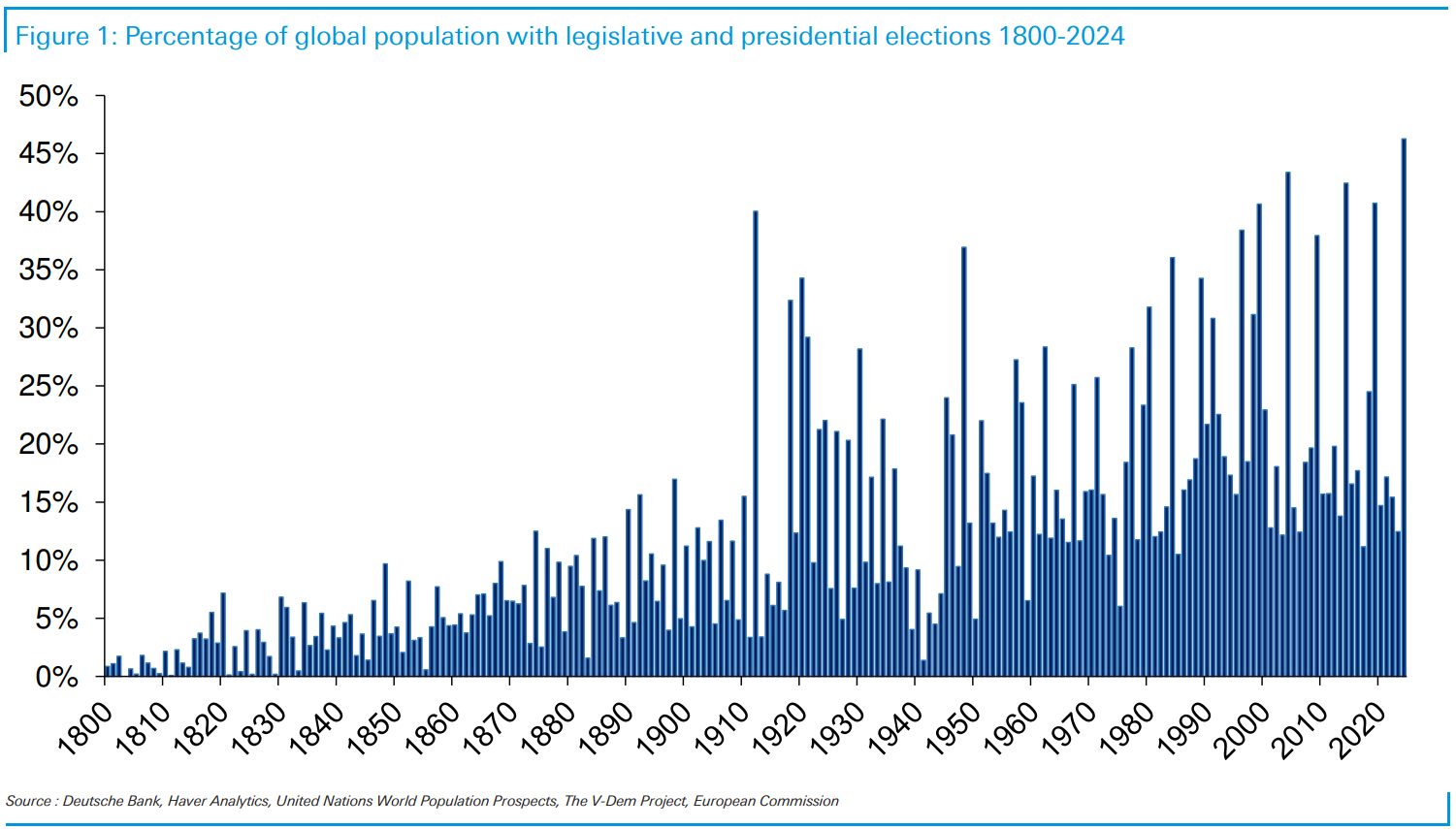1. QQQ Right to 2021 Resistance.
QQQ’s tried to break thru in June and July before sell-off.

2. Small Cap +15% Off Lows….Close to resistance at August Levels.
IWM Russell 2000 $190 next resistance.

3. Bond Returns One-Year After Last Rate Cut by Fed.

https://advisors.vanguard.com/advisors-home
4. Softbank Trading Sideways Below 200-Day for Two Years

5. India 2023 Leads World in IPOs

https://www.whitecase.com/insight-our-thinking/investing-india-thriving-ipo-market
6. Biotech Historical Discount.
Janus Henderson In biotech, many stocks trade at even bigger discounts – by some measures, the biggest we have ever seen. After a record drawdown in 2021 and 2022, small- and mid-cap biotech stocks got caught up in the sell-off of long-duration growth assets as 10-year Treasury yields started to rise in 2023. This is not unusual, as we tend to see biotech underperform amid rising rates, with less focus on stock-specific developments. But some market moves seemed extreme as even positive news – such as one company’s announcement of approval for its new therapy for phosphate management in dialysis – would sometimes result in negative returns.
As such, the S&P Biotechnology Industry Index1, a benchmark of large-cap biotech stocks in the S&P 500® Index, trades at a nearly 25% discount to its 30-year average.2 And the number of development stage biotech firms trading below the value of cash on their balance sheets hit a record high in October (Figure 1). Andy Acker, CFA Daniel Lyons, PhD, CFA
Figure 1: Biotech at a discount
The number of biotech companies with negative enterprise value* hit a record high in October.

Source: CapitalIQ, as of 3 November 2023. *Enterprise value is defined as the current market capitalization less the net cash on the balance sheet. A negative enterprise value suggests a company trades for less than the value of its cash.
7. History of S&P Cap Weight vs.Equal Weight Tops.
Irrelevant Investor Blog

https://theirrelevantinvestor.com/2023/12/03/these-are-the-goods-340/
8. The M2 money supply is in the midst of its longest stagnation since World War II.
Business Insider Professor Siegel -The US money supply is flashing a major warning to the US economy, according to Wharton professor Jeremy Siegel. M2 money supply, which includes cash, checking deposits, and other highly liquid assets, bottomed out around $20.7 trillion in April this year amid aggressive rate hikes, according to Federal Reserve data. That’s a 4% drawdown from the prior all-time-record of $21.7 trillion, which was recorded in 2021. Money supply then rebounded through the summer, but has recently returned to its decline, nearing April’s low.

9. History of December Returns.
Nasdaq Dorsey Wright-Historical December Performance Observations:
· The SPX has shown a positive return in December over 75% of the time since 1957. However, the index has been positive in the first half of the month just 59% of the time, compared to almost 79% in the second half.
· The RUT has been positive 75% of the time from 1979 forward, but the small-cap index has been positive only 45% of the time in the first half of the month, compared to 84% in the latter half.
· The SPX has seen the second half of the month outperform the first in 67% of instances.
· The RUT has seen the second half of the month outpace the first in 77% of instances.

https://www.nasdaq.com/solutions/nasdaq-dorsey-wright
10. Developing These 5 Habits Will Make You a Once-in-a-Career Leader to Employees
Practicing these five powerful tenets of leadership will make you unforgettable to employees and irreplaceable to employers.
BY SCOTT MAUTZ, KEYNOTE SPEAKER AND AUTHOR, ‘FIND THE FIRE’ AND ‘MAKE IT MATTER’@SCOTT_MAUTZ
The thing I wanted more than anything “growing up” as a leader was to be unforgettable to employees–for my impact on their performance, growth, happiness, and life. Did I achieve that status for anyone at all? I can only hope so because I know the impact that unforgettable leaders in my life had.
But alas, probably far too few have truly experienced this.
Research shows that 70 percent of employee engagement can be attributed to the managers or leaders, but only 30 percent of employees are engaged at work. So somebody isn’t doing their job.
In conducting research for Find the Fire, I interviewed or surveyed over 1000 employees and 1000 managers and found that almost 60 percent of employees say that the single biggest thing they want from their boss is for him/her to be inspiring; yet only 11 percent answer in the affirmative when asked if their boss is indeed inspiring.
Furthermore, self-awareness on this front isn’t exactly sky high among the leaders themselves. Leaders gave themselves an average score of seven out of ten for how inspirational they thought they were, while their employees scored them on this trait at an average of four out of ten or lower.
Yup, your boss thinks he’s inspirational like in Good Will Hunting, while you daydream of hunting for another job.
As part of my research, I also sought to determine exactly what makes a leader special; worthy of the status of “the best boss I’ve ever had”. Interestingly, five themes clearly stood out. And they weren’t all touchy-feely in nature but instead mixed things that spoke to delivering a great workplace and great results. Strive to ingrain these five habits and standout as a leader that stands the test of time.
1. Create meaning.
Understand that meaning is what motivates employees in a manner that sustains. Foster meaning through actions such as being clear on the organization’s purpose, encouraging each employee to define the legacy they want to leave behind, and by granting large swaths of autonomy. You also create meaning for employees when you invest in their personal growth and development and help foster their sense of competence and self-esteem.
You can help your employees become better versions of themselves and in so doing become a better version of yourself.
2. Consciously care.
I never said this stuff was rocket-science. And yet over two-thirds of employees say that their boss does not genuinely care about them.
This may be the lowest hanging fruit opportunity on this list. Visibly exude caring, compassion, and concern for employees. Thoughtfully administer rewards and recognition (tailoring to employee preferences for how they like to be rewarded), ensure employees have robust personal growth and development plans, and unswervingly show respect.
3. Decide and communicate the decisions.
Nothing is more crippling to an organization than a leader who can’t or won’t just make the call. Timelines extend unmercifully, costs skyrocket, and parallel paths linger and burn everyone out.
Organizational clarity starts with a leader who not only decides but also invests the time to over-communicate decisions (and the “why” behind those decisions).
As a leader, you can decide to just decide and better yet, enroll key stakeholders in those decisions along the way. People need to weigh before they can buy in, after all. There’s nothing wrong with healthy debate along the way by the way, but then after the debate, it’s time to decide, commit, and communicate the decision.
4. Set a vision and connect the dots.
It’s vital that once-in-a-career leaders set a compelling, inspiring vision that focuses employees and encourages the expenditure of their discretionary energy. It should be a vision grounded in strategic objectives and the values of the company.
When you set such a vision, employees show up with conviction and are passionate about building something together that makes a difference in something that matters. In the absence of a compelling vision, employees can flounder. Think about yourself and what it’s like to work in a place that has no clear, inspiring vision–you feel rudderless.
It’s just as important that the vision is then consistently communicated and that the leader helps each employee understand what their unique role is in delivering the vision.
5. Practice “relaxed intensity.”
This means having a very intentional balance of the seriousness and commitment it takes to win with the camaraderie and fun it takes to win on a sustained basis.
As a leader, you can role-model relaxed intensity by visibly having fun at work and being authentic and approachable while at the same time having a fierce desire to win, beat the competition, surpass goals, and continually improve.
You certainly don’t want to be too much of one or the other. I’ve been in organizations that were all intensity and no fun as well as places that were all fun but didn’t have enough underlying drive to succeed. Not good.
Being thought of as a once-in-a-career leader is a high bar to clear. So set a clear path for building these habits into your daily leadership routine.







































